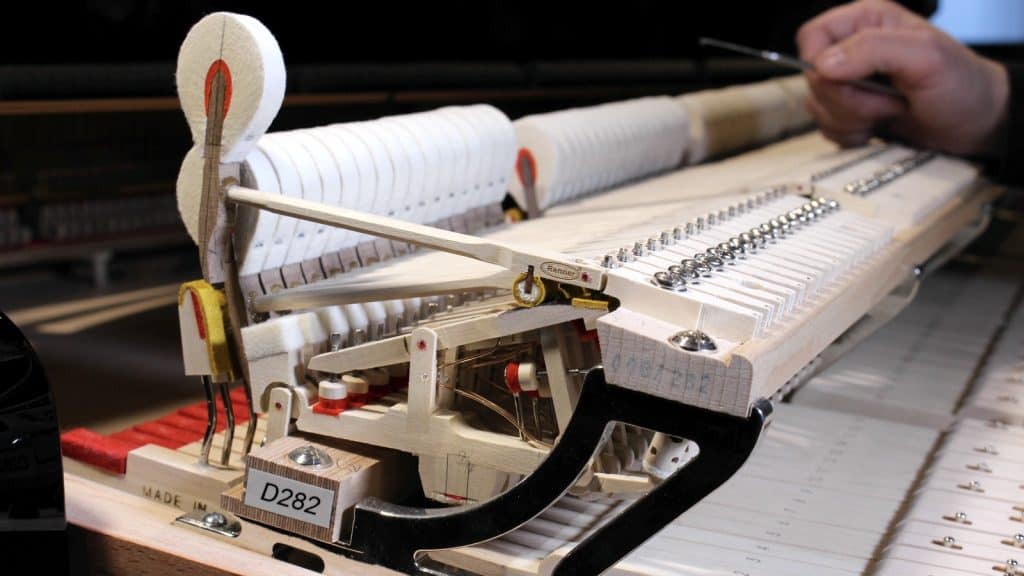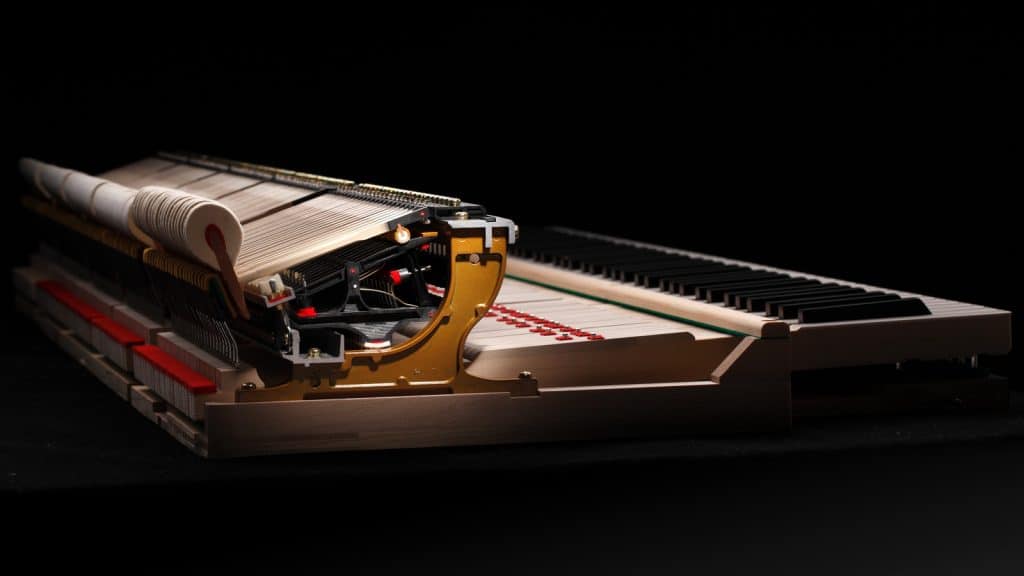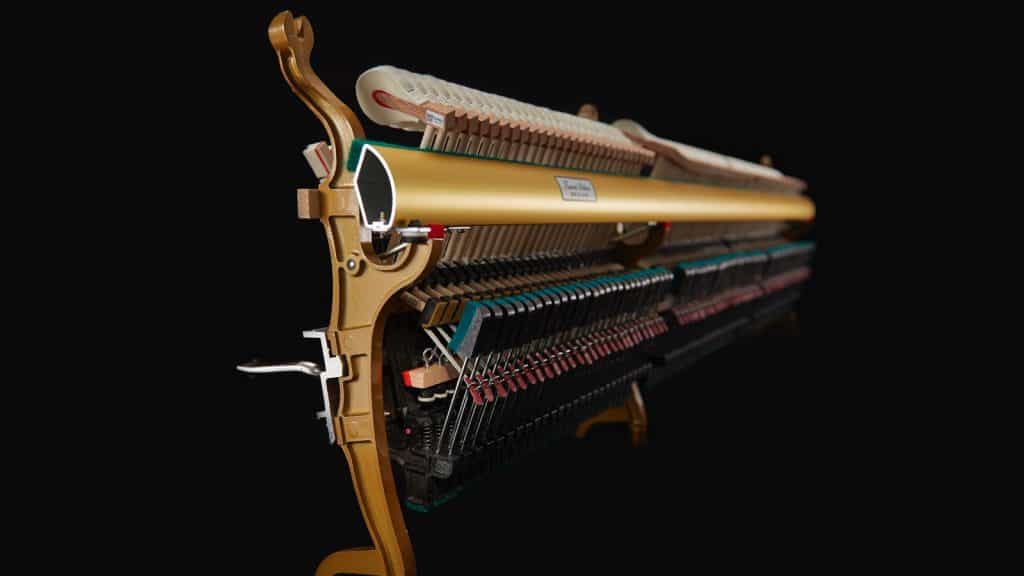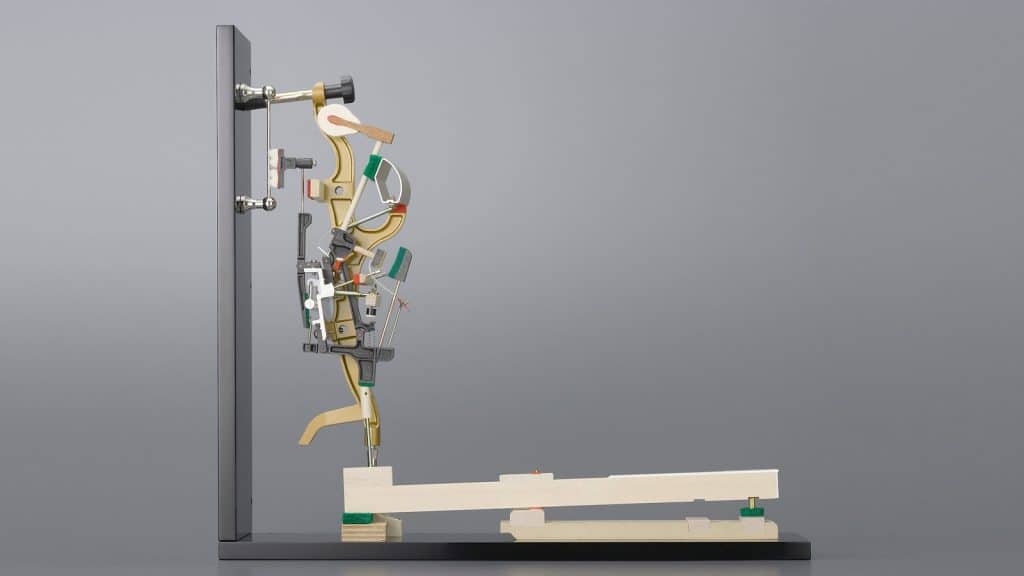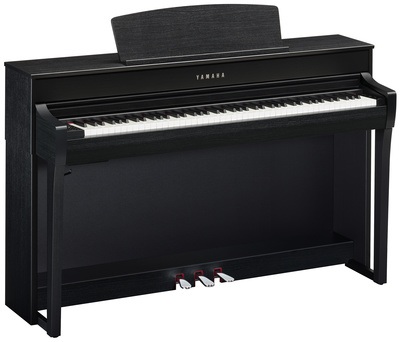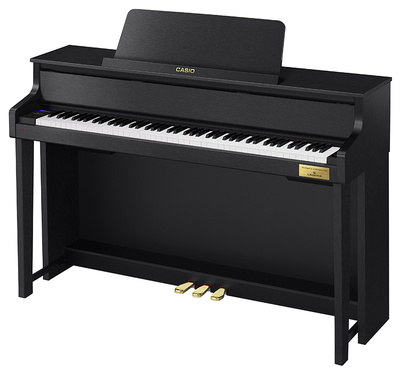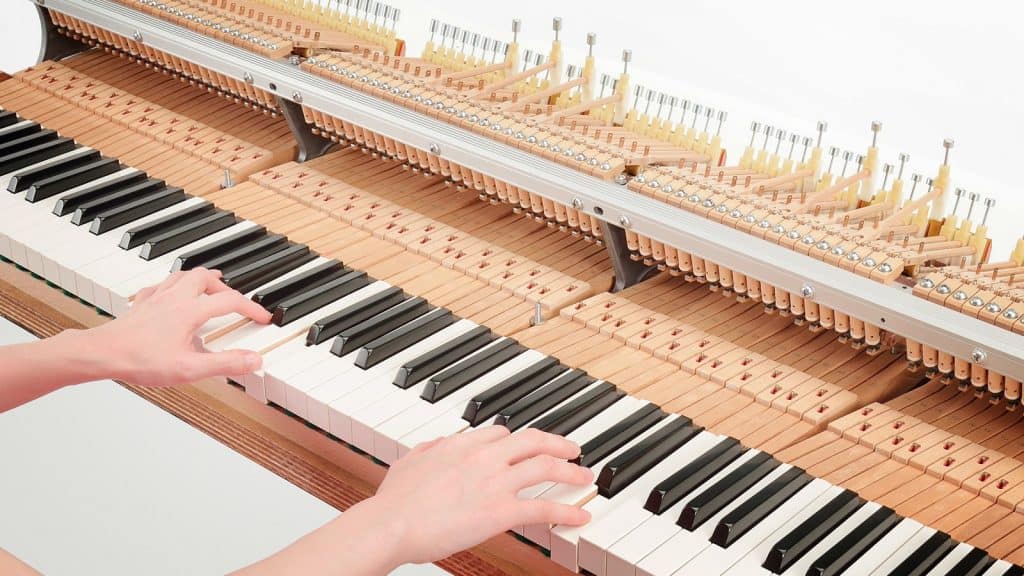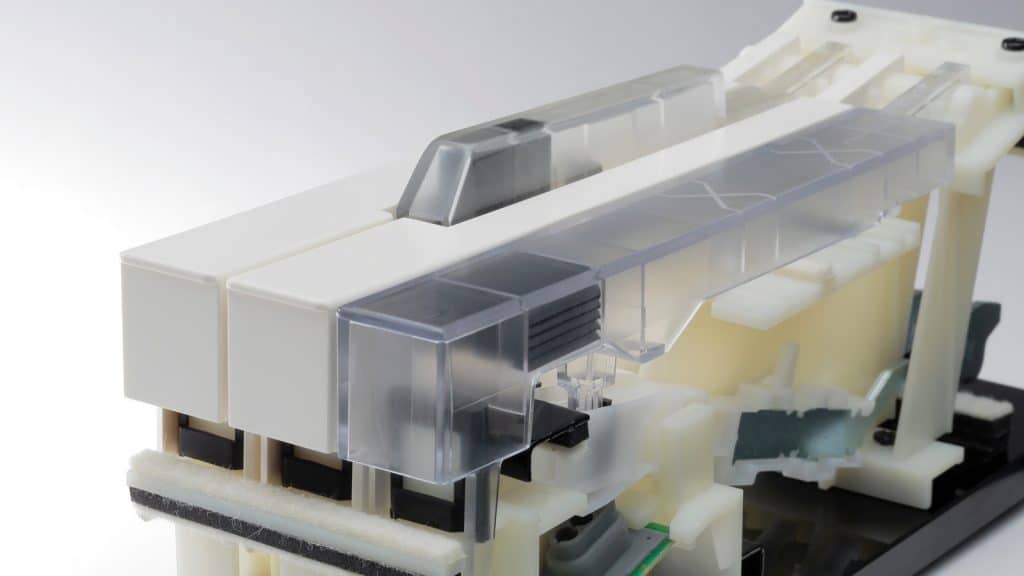Hammer action keyboard on digital pianos
The hammer action keyboard of a digital piano differs significantly from those of acoustic instruments. For this reason, beginners often ask if they can practice or learn how to play dynamically on a digital piano. Electronic or optical sensor systems trigger the sound on a digital piano and transmit the keyboard expression to the sound generator.
However, the hammer action itself is not involved in the sound generation process. The primary function of the hammer action keyboard on a digital piano is to reproduce the authentic feel of an acoustic piano. As such, it is an important feature of a digital piano.
How to recognize a good hammer action keyboard
You can find a hammer-action keyboard even on entry-level models in the lower price range. However, it is worth taking a closer look at the features – brands generally offer the best quality: Casio, Dexibell, GEWA, Kawai, Korg, Nord, Roland, Studiologic and Yamaha.
Keyboards come with different equipment depending on the price or model class. As a beginner, it doesn’t have to be the absolute best keyboard. It anyway takes a certain amount of time and playing experience to get a feel for the differences. If you are looking for the most authentic “piano feel” possible, look for the following keyboard features:
- Hammer action
- triple sensor system
- Graduated or scaled weighting (graded hammer action)
- Counterweight ( used to balance key and hammer weights)
- Let-off mechanism (escapement, let-off)
- Synthetic key tops (ivory-feel keyboard)

